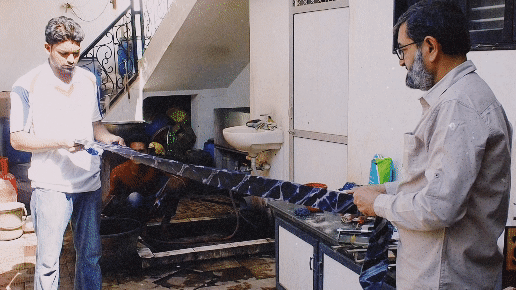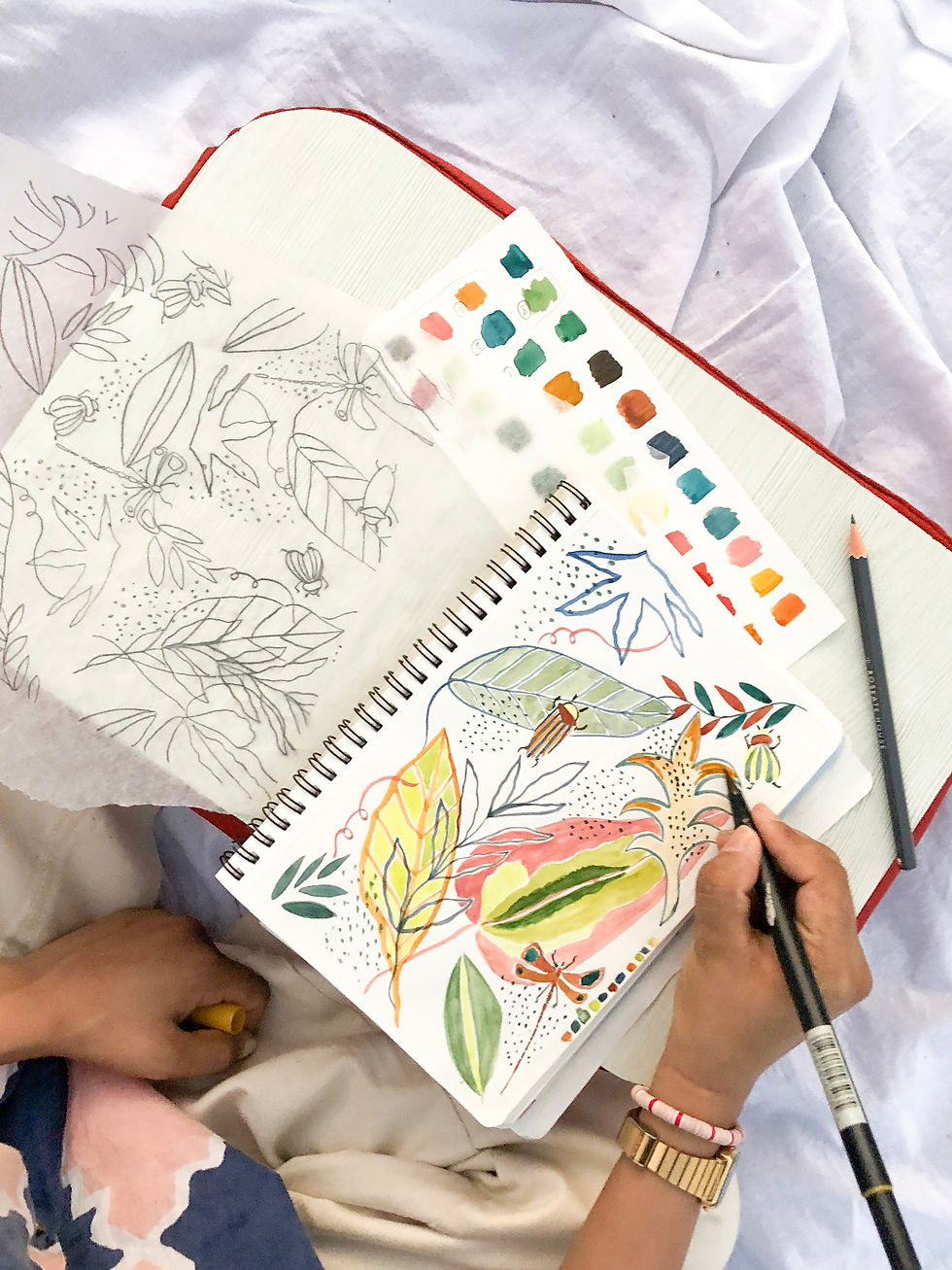The Geometry of Dye: A Journey Through Itajime Shibori
- HOWS

- Oct 16
- 3 min read

Among Japan’s many textile traditions, few carry the quiet intelligence of itajime shibori - a dyeing technique where geometry meets chance, and the pattern is revealed only after surrendering cloth to the alchemy of pressure and pigment.
Its restraint feels almost architectural: cloth folded like origami, pressed between carved wooden boards, and submerged into deep vats of indigo dye. The result is both precise and unpredictable: the trace of human intention meeting the fluid nature of dye.

The broader art of shibori - from the verb shiboru, meaning “to wring, squeeze, or press” - is ancient. The earliest surviving examples, preserved in the Shōsōin Repository in Nara and dating to the 8th century, were dyed silks believed to have originated from China and Central Asia along the Silk Road, reinterpreted in Japan with characteristic subtlety. Over centuries, shibori evolved into a distinctly Japanese expression - a tactile dialogue between cloth, hand, and dye.

During the Edo period (1603–1868), shibori flourished, particularly in Arimatsu and Narumi - small towns along the Tōkaidō route connecting Kyoto and Edo (modern Tokyo). Here, artisans developed over a hundred named techniques, from the minute bindings of kanoko shibori to the stitched resists of kumo and miura. Itajime, or “board-clamped” shibori, became known for its clean geometry and modern sensibility. Unlike other forms that relied on thread and needle, itajime used physical pressure to block dye, creating mirror-symmetrical motifs.

The fabrics used for shibori varied according to region and purpose - handwoven silks for the aristocracy, fine hemp and cotton for everyday wear. Indigo was the most common dye, its deep blue valued for both its beauty and its natural antiseptic qualities. In Shinto and folk traditions, indigo carried protective symbolism - believed to ward off insects and evil spirits alike. Safflower (benibana) yielded warm pinks and reds associated with youth and celebration, while persimmon tannin (kakishibu) lent russet tones used in workwear and banners.
Shibori-dyed textiles found their highest expression in kimono and ceremonial garments. In the Edo era, when sumptuary laws restricted ostentatious dress, subtlety became sophistication: intricate shibori patterns whispered where embroidery might shout. Silk crepe (chirimen) dyed with itajime motifs often adorned the under layers of kimono, known only to the wearer - a secret luxury, a private beauty.
The philosophical undercurrent of shibori - and itajime in particular - lies in its dialogue between control and accident. The artisan dictates the folds, the pressure, the time in the vat - yet the final image always contains surprise. It embodies wabi-sabi: the appreciation of imperfection, transience, and the quiet truth that nothing made by hand can be repeated exactly.

In our studio, that same spirit finds new expression. Our Indian artisans - masters of bandhani and leheriya, India's own resist-dyeing lineages - began exploring itajime under the guidance of Japanese mentors. The meeting was natural: both traditions revere the hand, the rhythm of repetition, and the beauty of impermanence.
Our silks are folded, clamped, and dyed using the old methods, yet what emerges feels distinctly our own - Japanese geometry rendered through Indian warmth and intuition. Each piece carries the memory of two traditions speaking across time: the quiet restraint of Japan and the expressive touch of India. In itajime, we find a shared language - of folding, binding, and releasing - and in that gesture, the ancient art continues to breathe.






Comments